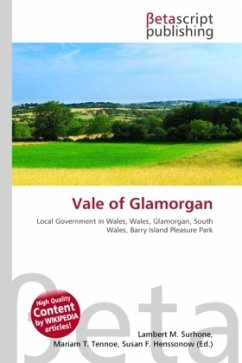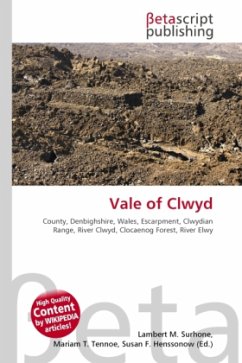
Vale of Kent
Versandkostenfrei!
Versandfertig in 6-10 Tagen
23,99 €
inkl. MwSt.

PAYBACK Punkte
12 °P sammeln!
High Quality Content by WIKIPEDIA articles! The Vale of Kent, located in Kent, England, is the name given to the broad clay vale between the Greensand Ridge and the High Weald. The area is drained by a number of rivers, including the Beult, Eden Medway, Stour and River Teise. Principal settlements in the Vale include Ashford and Tonbridge. The Weald is the eroded remains of a geological structure, an anticline, a dome of layered Lower Cretaceous rocks cut through by weathering to expose the layers as sandstone ridges and clay valleys. The oldest rocks exposed at the centre of the anticline are...
High Quality Content by WIKIPEDIA articles! The Vale of Kent, located in Kent, England, is the name given to the broad clay vale between the Greensand Ridge and the High Weald. The area is drained by a number of rivers, including the Beult, Eden Medway, Stour and River Teise. Principal settlements in the Vale include Ashford and Tonbridge. The Weald is the eroded remains of a geological structure, an anticline, a dome of layered Lower Cretaceous rocks cut through by weathering to expose the layers as sandstone ridges and clay valleys. The oldest rocks exposed at the centre of the anticline are correlated with the Purbeck Beds of the Upper Jurassic. Above these, the Cretaceous rocks, include the Wealden Group of alternating sands and clays - the Ashdown Sand, Wadhurst Clay, Tunbridge Wells Sand (collectively known as the Hastings Beds) and the Weald Clay. The Wealden Group is overlain by the Lower Greensand and the Gault Formation, consisting of the Gault Clay and the Upper Greensand.












